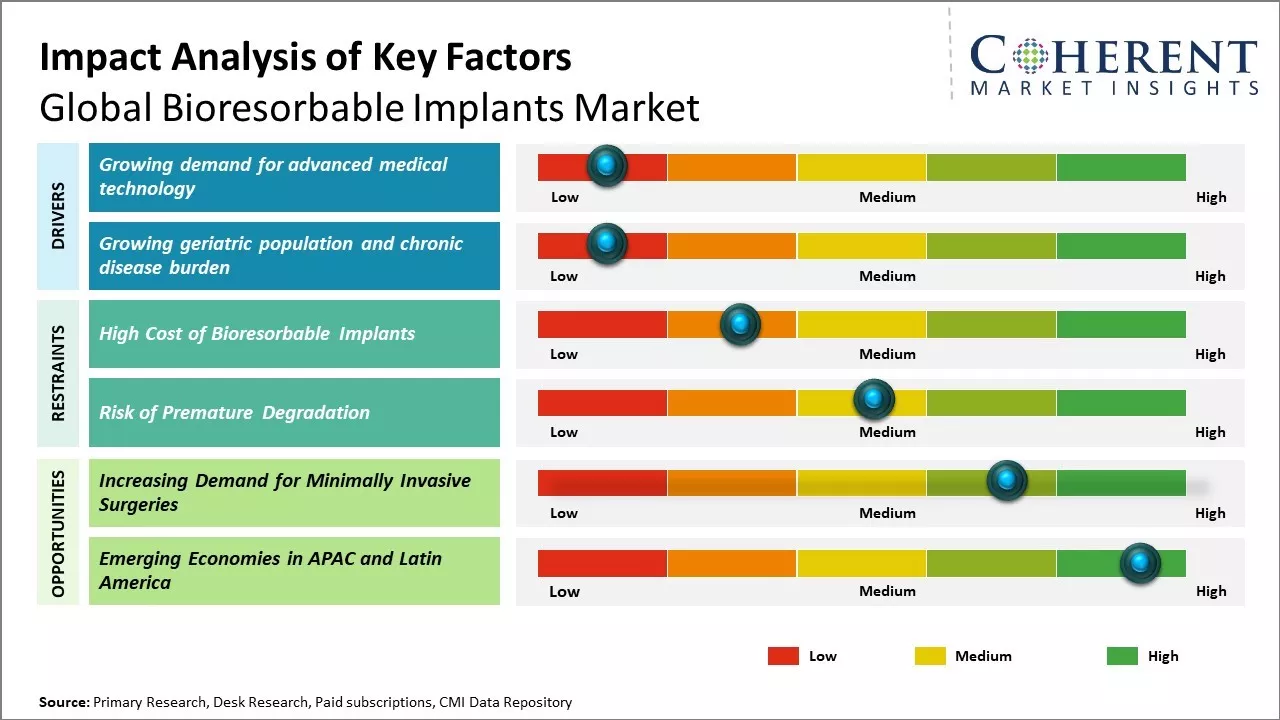Global bioresorbable implants market is estimated to be valued at USD 6.63 Bn in 2025 and is expected to reach USD 11.90 Bn by 2032, exhibiting a compound annual growth rate (CAGR) of 8.7% from 2025 to 2032.

To learn more about this report, Request sample copy
Growing prevalence of chronic diseases coupled with rising investments in R&D of regenerative medicine can drive the global bioresorbable implants market growth. The market growth is driven by rising number of trauma cases and accidents globally. Furthermore, growing geriatric population prone to chronic diseases like orthopedic disorders can also drive the market growth. However, high costs of bioresorbable implants and lack of awareness in low-income countries can hamper the market growth. Ongoing research and development of advanced bioresorbable materials can offer new opportunities for market players.
Growing demand for advanced medical technology
Global bioresorbable implants market growth is driven by increasing demand for advanced medical devices and technologies across the globe. These implants are majorly used for fracture fixation, drug delivery systems, and vascular stents that are used in orthopedic, cardiovascular and neurological conditions. As these disorders impose a significant burden on populations, there is growing prioritization on developing innovative solutions to treat patients effectively with minimal complications. Bioresorbable implants offer various clinical advantages over conventional metallic implants as these get absorbed naturally in the body once the healing process is complete, thus, eliminating the need for repeated surgeries to remove them. This reduces post-operative risks and healthcare costs. Their biocompatible properties prevent long-term interference with diagnostic imaging tests and enable closely monitoring tissue regeneration at the implantation site. Such benefits have made them an attractive alternative to permanent implants among both physicians and patients. Advancements in material engineering enable manufacturers to design implants with customized degradation profiles matching the healing timeline of different tissues. Gradually resorbing structures mimic the body's natural process of laying down new bone material or vascular walls. This facilitates regeneration of native tissue architecture without leaving any foreign remnants. Ongoing R&D into novel biomaterials, drug coating technologies, 3D printing applications and bioresorbable polymer composites can expand the scope of usable implantation sites.
Joining thousands of companies around the world committed to making the Excellent Business Solutions.
View All Our Clients